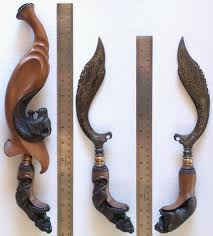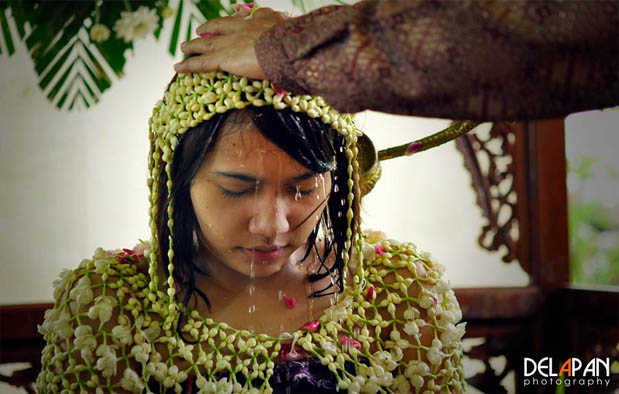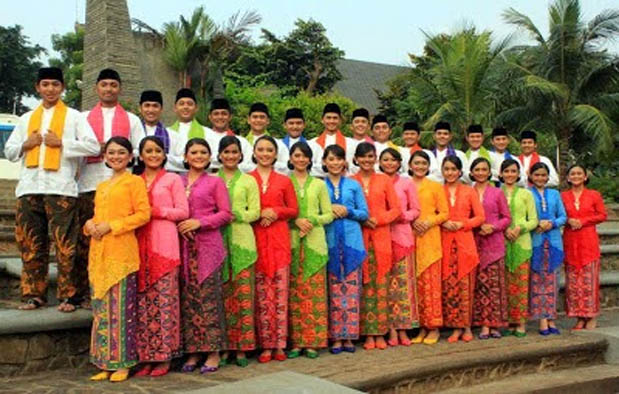 |
| Fatahilah Museum in the Old City of Jakarta |
Jakarta as the capital of the Republic of Indonesia has kept a very long history, even going back to prehistoric times. We can still study and enjoy this historical journey until now at the Fatahillah Museum, which is located in the Old City Area, or to be precise at Jalan Taman Fatahillah No. 2, West Jakarta. Here you can explore various historical relics of the city of Jakarta from prehistoric times, the heyday of the Sunda Kelapa port, the colonial era, to the post-independence period.
The Fatahillah Museum, also known as the Jakarta History Museum or the Batavia Museum, is a museum located at Jalan Taman Fatahillah No. 2, West Jakarta with an area of more than 1,300 square meters. This building used to be a City Hall (Dutch: Stadhuis) which was built in 1707-1710 by order of Governor General Johan van Hoorn. The building resembles the Dam Palace in Amsterdam, consisting of the main building with two wings on the east and west and a side building used as an office, a courtroom, and dungeons used as a prison. On March 30, 1974, this building was inaugurated as the Fatahillah Museum.
 |
| The City of Batavia in 1770 |
The architecture of the building is in a 17th-century neoclassical style with three floors painted in earthen yellow, and door and window frames made of dark green teak wood. The main roof has a compass direction. The museum has an area of more than 1,300 square meters. Yard with block arrangement, and a pond decorated with several old trees.
The objects that can be found in this museum include historical journeys of Jakarta, replicas of the remains of the Tarumanegara and Pajajaran eras, results of archaeological excavations in Jakarta, antique furniture from the 17th to 19th centuries, which is a blend of European, People's Republic of China, and Indonesian. There are also ceramics, pottery, and stone inscriptions. These collections are found in various rooms, such as the Jakarta Prehistoric Room, the Tarumanegara Room, the Jayakarta Room, the Fatahillah Room, the Sultan Agung Room, and the MH Thamrin Room.

There are also various collections on Betawi culture, numismatics, and pedicabs. Even now there is also a statue of the god Hermes (according to Greek mythology, the god of luck and protection for merchants) which was previously located at the Harmoni intersection, and the Si Jagur cannon which is considered to have magical powers. In addition, at the Fatahillah Museum, there is also a former dungeon that was once used during the Dutch colonial era.
In 1937, the Oud Batavia Foundation submitted plans to establish a museum on the history of Batavia, the foundation then bought the warehouse of the Geo Wehry & Co company which was located east of Kali Besar to be precise on Jl. Great North Gate No. 27 (now the Puppet museum) and rebuilt as the Oud Batavia Museum. The Old Batavia Museum was opened to the public in 1939.
 |
| Dioramas inside the Fatahilah Museum |
At the time of independence, this museum turned into the Old Djakarta Museum under the auspices of the LKI (Indonesian Cultural Institute), and then in 1968, the "Old Djakarta Museum" was handed over to the Regional Government of DKI Jakarta. The Governor of DKI Jakarta at that time, Ali Sadikin, then inaugurated this building to become the Jakarta History Museum on March 30, 1974.
To improve its performance and appearance, the Jakarta History Museum since 1999 has been determined to make this museum not just a place to treat and exhibit objects from the Batavian period, but also to be a place for all people, both Indonesian and foreign, children, adults and even for people with disabilities to add knowledge and experience and can be enjoyed as a place of recreation. For this reason, the Jakarta History Museum tries to provide information about the long history of the city of Jakarta, from prehistoric times to the present in a more recreational form. In addition, through its exhibition system, the Jakarta History Museum tries to describe "Jakarta as a Cultural Meeting Center" from various ethnic groups, both from within and outside Indonesia, and the history of the city of Jakarta as a whole. The Jakarta History Museum also always tries to organize recreational activities so as to stimulate visitors to be attracted to Jakarta and increase awareness of the importance of cultural heritage.
The Jakarta History Museum building was built in 1620 by Governor General Jan Pieterszoon Coen as the second city hall building in 1626 (the first town hall was built in 1620 near East Kalibesar). According to historical records, this building only had one story, and the construction of the second level was carried out later. In 1648 the condition of the building was very bad. Jakarta's soil is very unstable and the weight of the building causes it to descend from the ground. An easy solution by the Dutch government was not to change the existing foundation but to raise the floor by about 2 feet (56 cm). According to a report, 5 cells under the building were built in 1649. In 1665 the main building was widened by adding one room each on the West and East sides. After that, several repairs and changes were made to the Stadhuis building and the prisons until they became the form we see today.

Apart from being used as a Stadhuis, this building is also used as a "Raad van Justitie" (court council). From 1925-1942, this building was used as the West Java Provincial Government Office and from 1942-1945 it was used as the logistics collection office for Dai Nippon. In 1952 this building became the headquarters of the City Military Command (KMK) I, then it was changed back to KODIM 0503 West Jakarta. In 1968, this building was handed over to the Regional Government of DKI Jakarta, then it was inaugurated as the Jakarta History Museum on March 30, 1974.
As is common in Europe, the city hall building is equipped with a field called “stadhuisplein”. According to a painting made by a VOC employee ''' Johannes Rach'' who came from ''Denmark'', in the middle of the field there is a fountain which is the only source of water for the local community. The water comes from Pancoran Glodok which is connected by a pipe to Stadhuiplein. In 1972, excavations were carried out on the field and found the foundation of a fountain complete with its pipes. So with historical evidence, it can be rebuilt according to Johannes Rach's drawings, then a fountain is created in the middle of Fatahillah Park. In 1973 the Regional Government of DKI Jakarta re-functioned the park by giving it a new name, namely '''Taman Fatahillah''' to commemorate the commander Fatahillah who founded the city of Jakarta.
Based on archaeological excavations, there is evidence that the first settlements in Jakarta were located on the banks of the Ciliwung river. This settlement is thought to have originated in 2500 BC (the Neolithic Period). The first written evidence found is the Tugu inscription issued by King Tarumanegara in the 5th century. Inscriptions are evidence of religious activities at that time. In the next period around the 12th century, this area was under the rule of the Sunda kingdom with its famous port of Sunda Kelapa port.
It was during this period that a trade agreement was held between the Portuguese and the Sundanese king. In the 17th century trade with foreign parties expanded, and the port of Sunda Kelapa changed to Jayakarta (1527) and then became Batavia (1619). In 1942 the Japanese seized power from the hands of the Dutch and ruled Indonesia until 1945.
Its treasury totals 23,500 pieces originating from the legacy of the Old Jakarta Museum (Oud Batavia Museum), the result of procurement efforts by the DKI Jakarta Government and donations from individuals and institutions. Consists of a variety of materials both of the same kind and mixtures, including metal, stone, wood, glass, crystal, pottery, ceramics, porcelain, cloth, leather, paper, and bone. Among the collections that should be known to the public are Cannon Si Jagur, sketches, statues of Hermes, execution swords, filing cabinets, paintings of the Dutch East Indies Governor General of the VOC in 1602-1942, round tables with a diameter of 2.25 meters without a connection, tools of prehistoric society, inscriptions and weapon.
The collections on display amount to more than 500 pieces, and the others are stored in storage (storage room). Some of the collections are more than 1,500 years old, especially the collections of prehistoric people's living tools such as stone axes, square pickaxes, and earthenware jugs. The heritage collections of the Old Jakarta Museum date back to the 18th and 19th centuries such as chairs, tables, filing cabinets, beds, and weapons. Periodically rotation is carried out so that all collections can be enjoyed by visitors. To enrich the treasury of museum collections, it opens opportunities for individuals and institutions to lend or donate their collections to the Jakarta History Museum.
By keeping abreast of developments in the dynamics of society who want change so as not to sink into a static and boring atmosphere, and supported by policies contained in the museum's vision and mission, regarding the organization of a museum that is oriented towards community service interests, the permanent exhibition system for the Jakarta History Museum is carried out chronologically. the history of Jakarta, and Jakarta as a cultural meeting center of various ethnic groups both from within and from outside Indonesia. To display stories based on Jakarta's historical chronology in the form of displays, collections related to history are needed and supported graphically using photographs. , drawings and sketches, maps, and explanatory labels to make it easy to understand in relation to historical factors and the historical background of Jakarta.
While the presentation of cultural nuances is also packaged artistically where it can be seen that there is a process of cultural interaction between ethnic groups. The arrangement is adjusted in the most effective way possible to live up to the existing cultures so as to invite community participation. The layout of the permanent exhibition of the Jakarta History Museum is carried out in a planned, gradual, schematic, and artistic manner, so as to create comfort and add insight to visitors.
Reference: Wikipedia











































